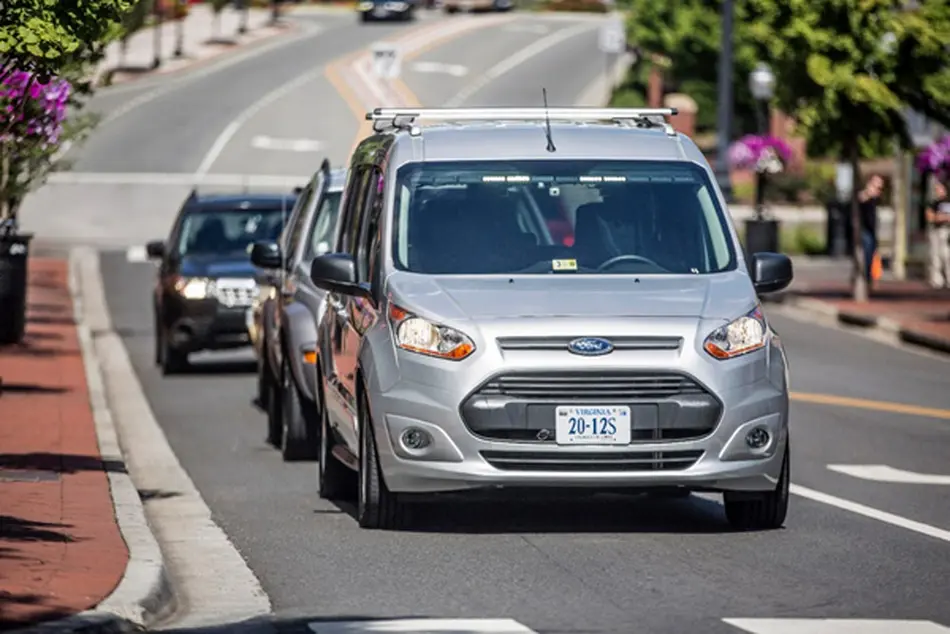Ford and Virginia Tech use ‘invisible driver’ to test human-AV communication system

Ford and Virginia Tech Transportation Institute (VTTI) have been using a researcher disguised as a car seat to study real-world reactions to a self-driving car on public roads.
As part of Ford’s efforts to ensure autonomous vehicles (AVs) can safely share the road with humans, the joint research project set out to investigate the most effective means for the vehicle to communicate its intentions.
The team decided lighting signals are the most effective means for creating a visual protocol for self-driving vehicles, as they are already standardized and widely understood for turning and braking indication, so would be best to communicate whether the vehicle is in autonomous mode, beginning to yield, or about to accelerate from a stop.
Ford equipped a Transit Connect van with a light bar placed on the windshield, and to simulate a fully self-driving experience without using an actual AV, the VTTI team developed a method to conceal the driver with a ‘seat suit’.
The outfit creates the illusion of a fully autonomous vehicle, which is necessary to test and evaluate real-world encounters and behaviors. The team then experimented with three light signals to show vehicle’s intent:
• Two white lights that move side to side, indicating it is about to yield to a full stop;
• Solid white light to indicate vehicle is driving autonomously; and
• Rapidly blinking white light to show it is beginning to accelerate from a stop.
Numerous high-definition cameras mounted in the study vehicle provided a 360° view of surrounding areas and captured the behavior of other road users. The simulated AV was driven on public roads in northern Virginia throughout August, with researchers capturing video and logs of pedestrian reactions.
More than 150 hours of data over approximately 1,800 miles (2,897km) of driving was collected in an urban environment, including encounters with pedestrians, bicyclists and other drivers. External signals were activated more than 1,650 times at various locations around Arlington, including at intersections, parking lots, garages, and airport roadways.
“Understanding how self-driving vehicles impact the world today is critical to ensuring we’re creating the right experience for tomorrow,” said John Shutko, Ford’s human factors technical specialist.
“We need to solve the challenges presented by not having a human driver, so designing a way to replace the head nod or hand wave is fundamental to ensuring safe and efficient operation of self-driving vehicles in our communities. That’s why we’re developing and advocating for a standard solution, so it can be adopted by the industry and applied to all self-driving vehicles.”



